Various Types of Skate Bearings

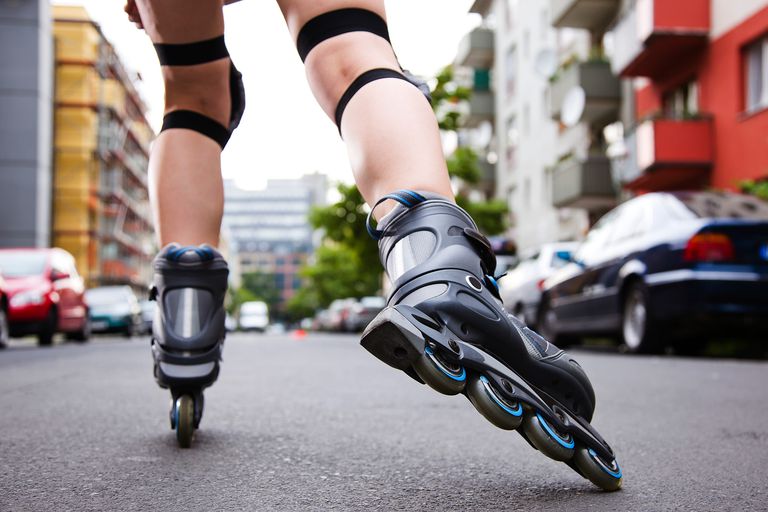
The bearings are a short cylinder with flat sides housing 7 to 9 lubricated balls. These small balls are the pivotal point on which the weight of the skater is dispersed and the tension between the wheel and axle is converted to circular motion. The specific type of bearing can be described by the material, size and ABEC rating that classifies it.
Materials
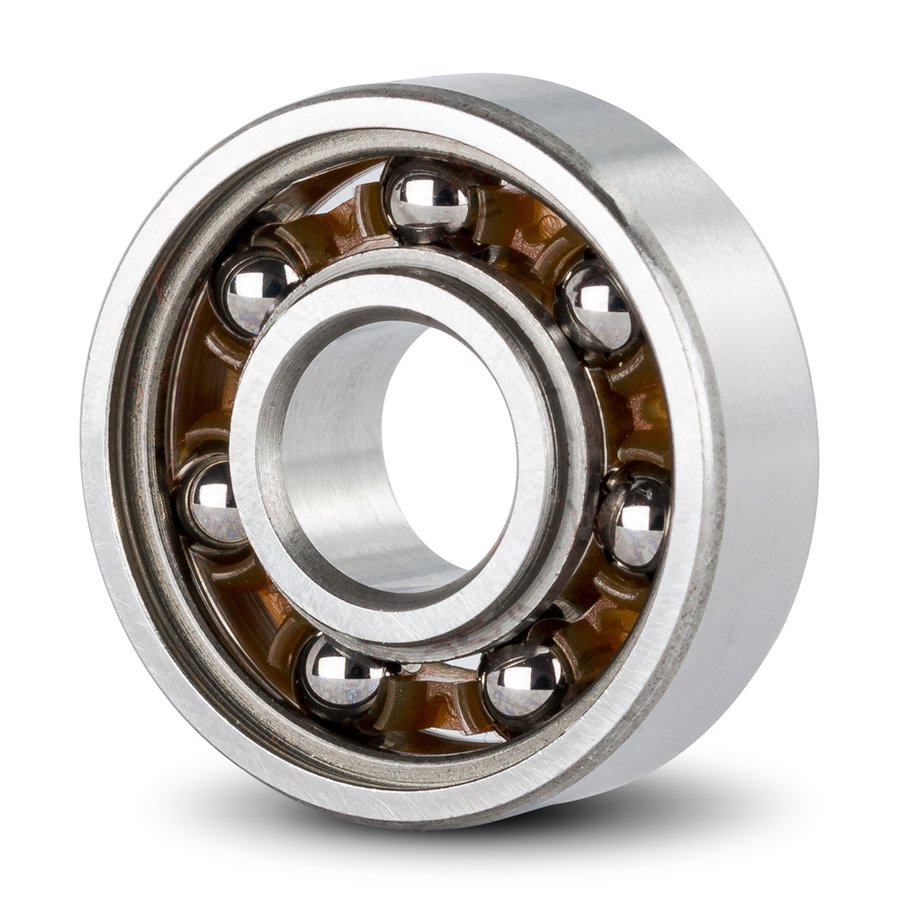
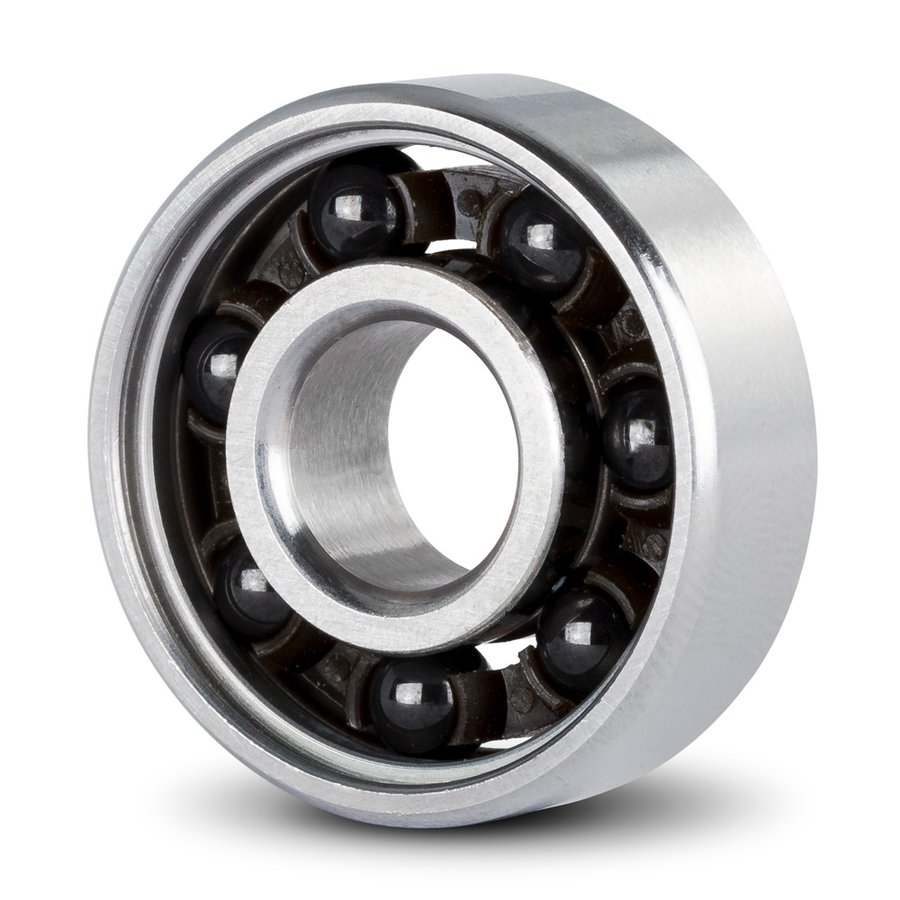
Steel — The most common material used for bearings is steel. This is usually the best option for reasons of economy and high durability. This is a good option for all levels of expertise.
The major consideration about these bearings is that they are responsive to heat. The great amount of tension that passes through the wheel and axle can generate tremendous heat which can cause the steel to expand. This greatly reduces the effectiveness of the bearings.
Proper maintenance will preserve the integrity of the bearings increasing their functional life and performance in action.
Ceramic — To address the issue with expanding steel, bearing manufacturers needed a material that would withstand temperatures with greater durability. Ceramic bearings are made of a material called silicon nitride, which is much smoother than steel and responds to heat with greater resolution.
Sizes
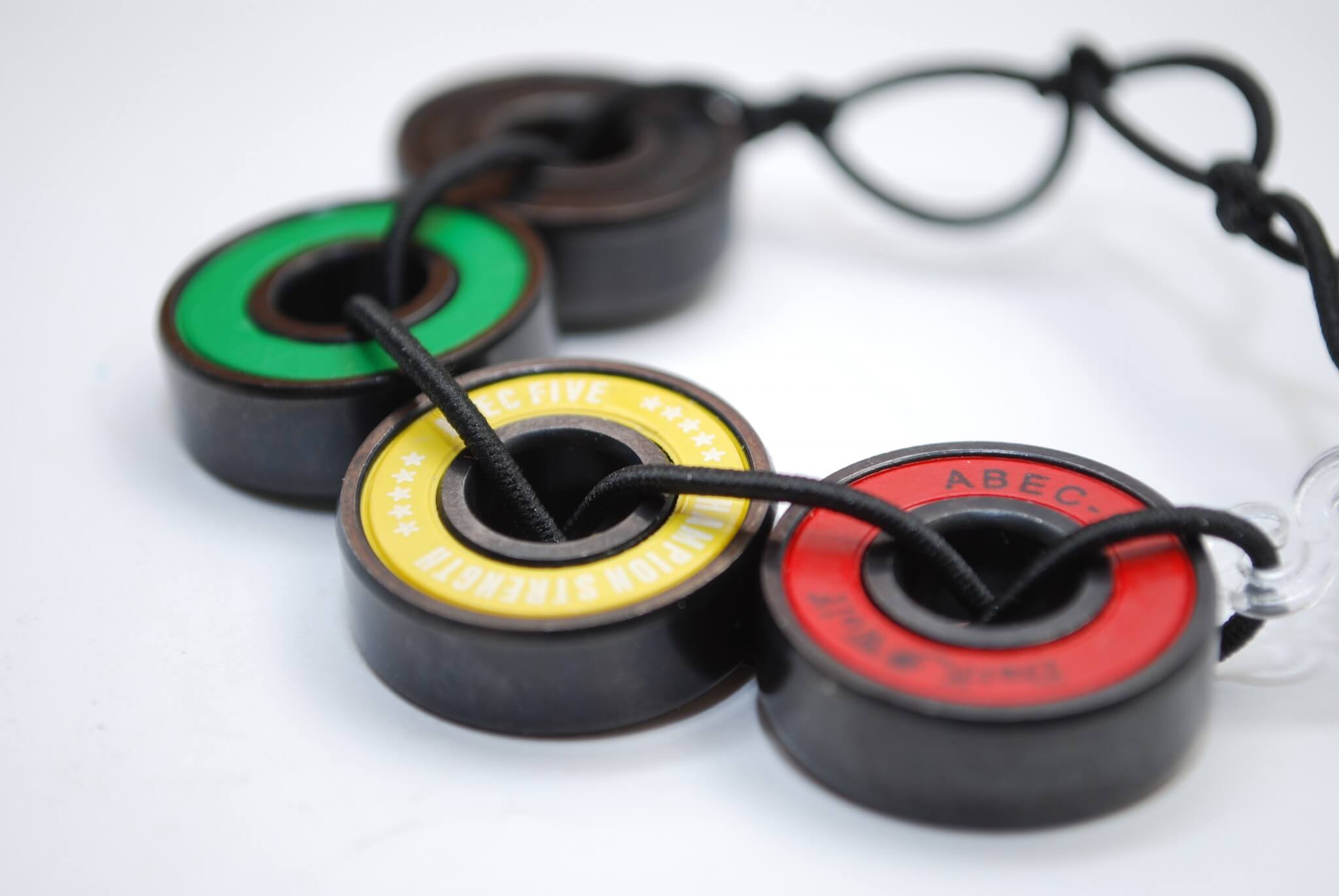
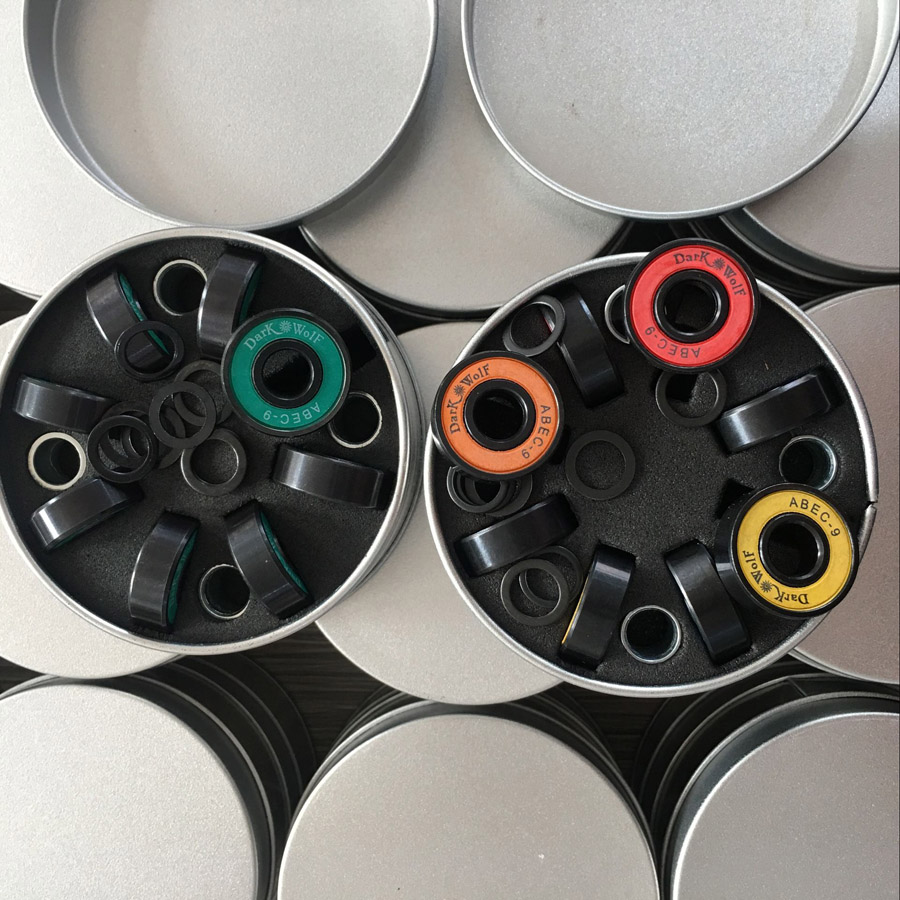
608 size, with an 8mm bore, a 22mm diameter, and 7mm wide (open, sealed or non-serviceable and shielded) used for inline skates, scooters, skateboards and some quad speed skates.
627 size, with a 7mm bore, a 22mm diameter, and 7mm wide (open, sealed or shielded) used on artistic and recreational quad skates and some quad speed skates.
688 size, with an 8mm bore, a 16mm diameter, and 4mm wide (unsealed) or 5mm wide (two shields). This extra light micro bearing is used with some of the new speed skate wheels.
698 size, with an 8mm bore, a 19mm diameter, and 6mm wide (open, sealed or shielded). This extra light micro bearing is used with some of the new speed skate wheels.
NON-STANDARD — You may come across a skateboard that does not match the standard . This not usually a problem, just something to keep in mind.
ABEC Ratings
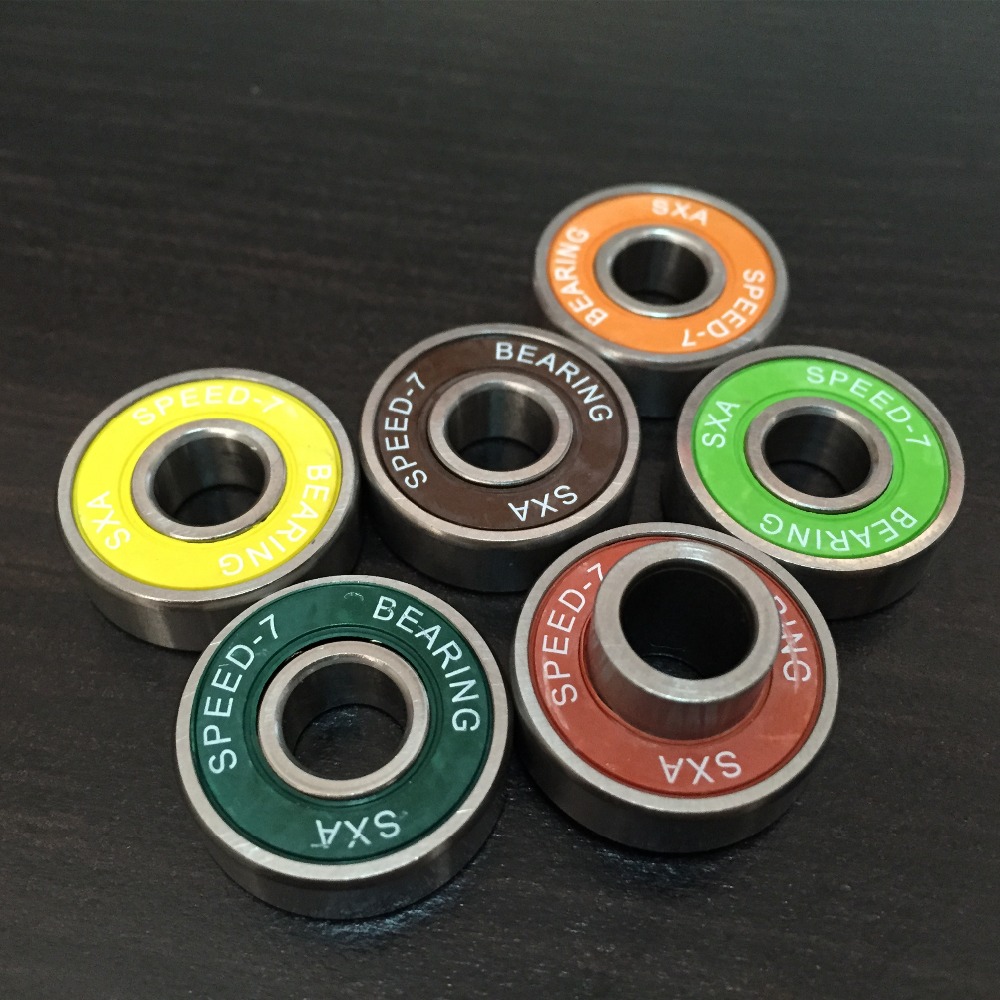
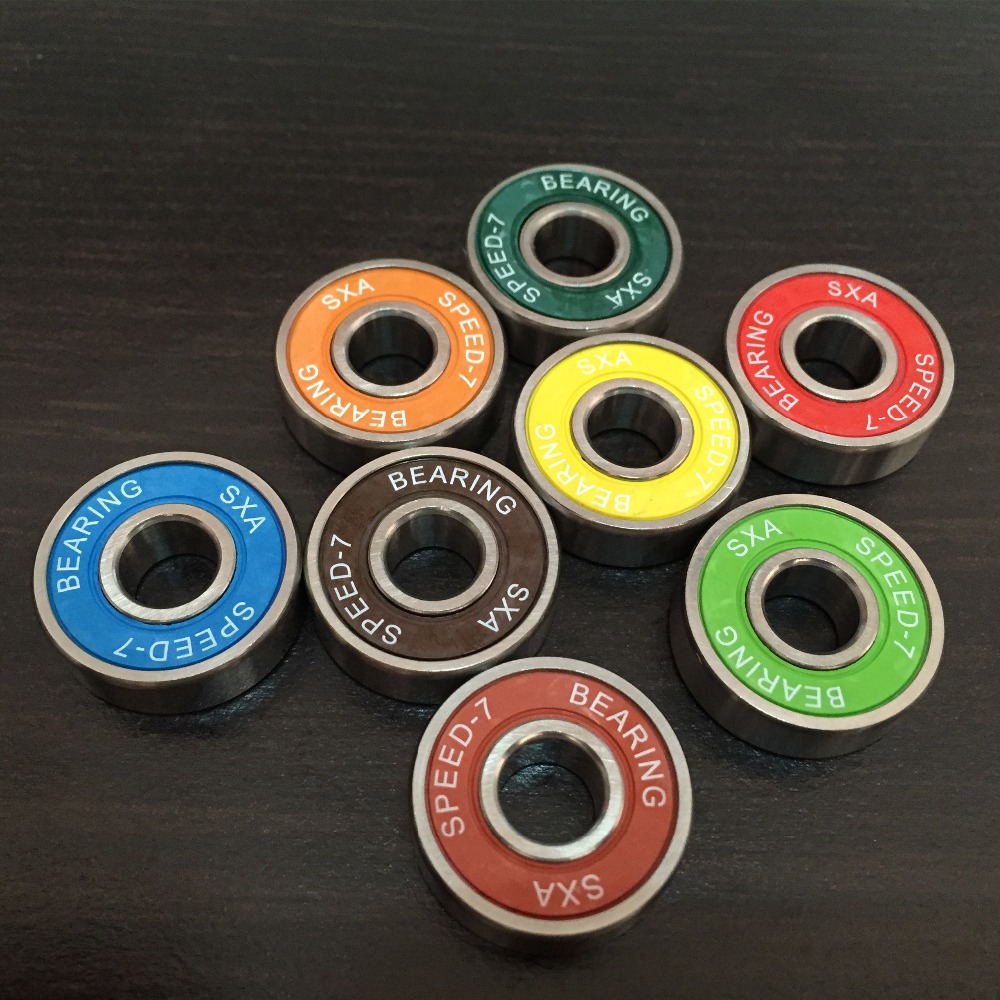
ABEC stands for Annular Bearing Engineering Committee, the committee that rates bearings all over the world.
In this system, the scale uses odd-numbered levels 1, 3, 5, 7 and 9, with 9. The higher this number is the tighter the tolerance of the bearing and the better the degree of precision of the bearing. A higher ABEC rating does not necessarily mean a faster standard 608 size bearing, the rating just indicates that it is more efficient.
ABEC 1 bearings are the least expensive and the least precise but may be more durable.
ABEC 3 bearings are found in some children's and entry level budget skates and are not good for speed.
ABEC 5 bearings can be found in many recreational and fitness inline skates.
ABEC 7 bearings can be very fast and smooth, but they are expensive.
ABEC 9 and higher bearings are not necessary for most inline skating activities.






